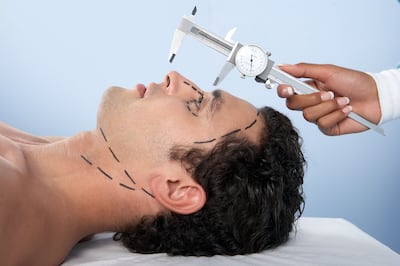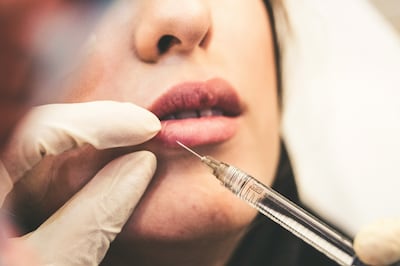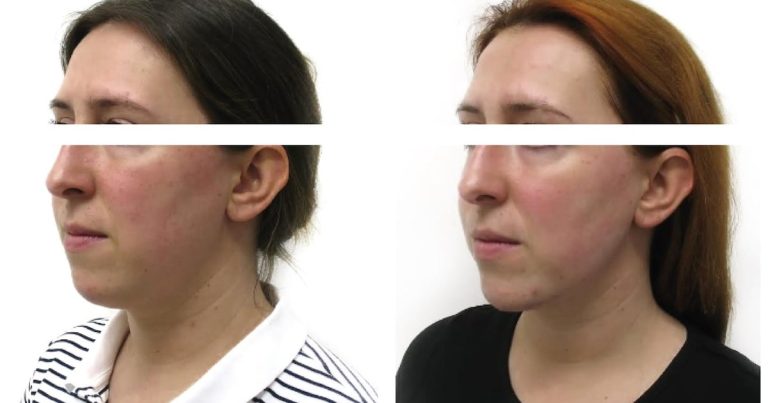From tweaks to makeovers, cosmetic procedures are meant to change our appearance. How do we travel? This is usually not part of the plan.
However, this was the case for recent passengers who traveled through Dubai as they failed to get through departures, with security citing their passport photos did not match their appearances. Fortunately, nothing sinister was at play as recent cosmetic surgery was the culprit – and it’s not the first incident.
In October, TikTok personality Joanne Prophet opened up to her followers about how her transformation had caused problems with her transportation. He said: “He finally updated my passport photo after being questioned every time I fly because he obviously doesn’t look like me.”
Earlier that year, fellow TikTok user Tomi Grainger was stopped at Sydney International Airport and later revealed: “That’s when it dawned on me: I don’t look like the person in this photo anymore because I’ve had so much plastic surgery.”
But how much plastic surgery is too much when it comes to airport security?
Creating facial signatures: how biometric security works
Airports around the world are increasingly relying on biometric technology to streamline the passport control process. If you’ve passed through Dubai International Airport recently, as 87 million passengers did last year, you’ll know that eGates can scan their way through more travelers in less time than gate attendants.
This means passengers are increasingly being identified through facial recognition software. By analyzing a person’s features and bone structure, the technology creates a “unique facial signature to accurately identify and verify people,” explains Sadi Vural, CEO of global facial technology company Ayonix.
Cosmetic surgery that plays with the eye area and the height and shape of the nose can affect facial recognition accuracy
Sadi Vural, CEO, Ayonix
Each signature consists of the study of three basic measurements that combine to create a face: the shape of characteristic landmarks such as the eyes, nose and mouth. distances and boundaries referred to as local features, such as the width between the eyes. and the holistic features or how all the pieces of the puzzle fit together.
Once that signature is established, any procedure—or collective procedures—that change the “overall geometry of the face” can pose a challenge to both humans and technology, Vural says.
Changing facial geometry: Confusion at passport control
“Cosmetic surgery that plays with the eye area and the height and shape of the nose can significantly affect facial recognition accuracy,” explains Vural. “Any changes in skin texture no.”
But what do the surgeons who work to perform such treatments have to say? Dr Maurizio Viel, a plastic surgeon at the Cornerstone Clinic in Dubai, points out four procedures to watch out for.

Jaw (orthomaxillary) surgery
Necessary for facial structure – or features – jaw surgery is a procedure to watch out for. Dr. Viel explains, “This is done to correct jaw and facial conditions related to structure, growth, sleep apnea, TMJ [temporomandibular] disorders, malocclusion problems due to skeletal disharmonies, or other orthodontic problems that cannot be easily treated with braces.”
Nose surgery (rhinoplasty).
Nose surgery can change the patient’s appearance with the naked eye and AI technology. Dr Viel explains that while it’s often cosmetic with subtle effects, it’s worth paying attention to how small changes can be read differently by facial scanners.
Craniofacial surgery
This refers to surgeries on the face and skull, which are usually done to “correct congenital abnormalities or trauma-related injuries,” rather than cosmetic changes that, by their nature, often have visible results.
Important weight loss procedures
“Although not facial surgery, significant weight loss, especially if achieved quickly through bariatric surgery, can drastically change facial features,” explains Dr. Vedi. The jawline and cheekbones may appear more prominent, which could potentially mislead biometrics determined by a previous face scan or image.
Can injectables and other modifications affect your passport?
As biometric data mostly maps fixed points on the face that are difficult to reshape, changes in “fleshy areas” should not cause problems for jet-setters, says Dr Vedi.
However, this does not exclude all botox, fillers or similar treatments from the watch list.

“Injectables and filler procedures can definitely affect the proportions and anatomical landmarks of certain areas,” says Dr. Ashwin Soni, plastic surgeon and founder of the Soni Clinic. He adds that this can confuse security staff and passport security software.
“The nose, eyes and mouth are all taken into account when your face is scanned, so if they change dramatically, the contours and proportions of your face can also change,” he explains.
It is our body, our physical appearance, that should match the document and not the other way around
Patrick Bixby, professor and author
How common this issue really is – despite the recent news – is more up for debate. Dr. Soni emphasizes that most surgeons strive for natural-looking results, which is why the majority of patients book.
“It is our responsibility to guide patients in an ethical and honest manner,” he adds. “I think it’s important to set realistic expectations.”
Dr. Viel echoes the sentiment, adding, “We’ve never had a patient change their passport after surgery in my 25 years as a surgeon.”
The future of passport security in the age of cosmetic surgery
As international travel and face-changing surgeries increase alongside technological advances, it’s time to rethink the way we recognize people.
Patrick Bixby, author of Travel Permit: A Cultural History of the Passportexplains that passport identity is constantly evolving – with photos introduced following security concerns during the First World War – and in this day and age, our physical appearance rules.
He says: “While modern passports are supplemented with other identifiers – such as a fingerprint, iris and even a face scan – it is important to remember that it is our body, our physical appearance that should match the document, not the other way around.
“In other words, the documentation is the authoritative part. Cosmetic surgery will be charged to passport holders for information.”
For those wondering whether new technologies will dominate the photography kingdom, Bixby reassures that “the future is already here.”
He mentions Smart Gates in Dubai, where residents can pass through eGates using fingerprints or iris scans to match a passenger’s ID, and the ongoing developments of a Known Traveler Digital Identity program, which combines “biometric authentication, blockchain technology and identification databases’. could be used worldwide.
Backing this up, Vural reveals that his company is busy “developing advanced facial recognition technology that is not affected by cosmetic changes,” which includes “incorporating a larger dataset of facial training models, including pre- and post-surgery images, that will further reduce the effects of cosmetic procedures on facial recognition.”
When looking for an easy test to see if it’s time to update your passport after cosmetic surgery, Dr Soni suggests: “An iPhone can often be used as an indicator using Face ID as a test.”
If you’ve had to update your phone’s Face ID after surgery, it’s probably time to update your passport.
Updated: March 13, 2024, 2:56 p.m

